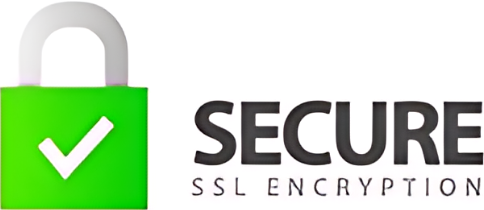How to Save Tax on Employee Salaries (Legally)
In today’s fast-paced tech industry, IT companies handle large teams of developers, designers, project managers, QA engineers, and remote workers. Managing payroll manually becomes increasingly complicated as these companies grow. From calculating salaries to managing tax compliance, HR teams face many repetitive and time-consuming tasks. This is why payroll software in Pakistan has become essential for IT companies. It streamlines salary processing, reduces errors, ensures compliance, and improves overall efficiency.
1. Complex Salary Structures in IT Companies
IT companies usually follow multifaceted salary structures because employees work in diverse roles with varying compensation elements. These structures often include basic salary, technical allowances, performance bonuses, attendance-based incentives, overtime payments, project-linked rewards, travel and remote-work reimbursements, and sometimes foreign currency adjustments for international projects.
Handling all these components manually becomes extremely time-consuming for HR teams. Every month, they must gather data from multiple departments attendance, project management, performance tracking and manually compute salaries. This increases the chances of human errors, which can lead to employee dissatisfaction, salary disputes, and administrative delays.
Payroll software eliminates these problems by automating the entire workflow. Once salary rules are set, the system calculates each component allowances, deductions, bonuses, and reimbursements instantly and accurately. It removes repetitive manual tasks, ensures consistency, improves transparency, and gives employees complete clarity through automated salary slips and dashboards.
2. Accurate Tax Calculations and Compliance
For IT companies in Pakistan, tax compliance is a critical responsibility because they must strictly follow FBR laws, especially income tax calculation under Section 149 of the Income Tax Ordinance. When HR teams calculate taxes manually, mistakes can easily occur misinterpreting tax slabs, forgetting updates, or incorrectly applying exemptions or rebates. These errors can lead to under-deductions or over-deductions, creating audit issues or even legal penalties for the company.
Payroll software prevents these risks by automatically updating the latest FBR tax slabs and rules. Every time a new tax update is issued by the government, the software reflects it instantly. It then applies the correct tax percentage based on each employee’s income bracket. This ensures that salary deductions are always accurate, consistent, and fully compliant with national regulations.
Additionally, automated tax calculations reduce HR workload, prevent disputes, and ensure the company avoids penalties for misreporting or incorrect deductions. The system also generates detailed tax reports, making audits and compliance checks much easier.
3. Efficient Management of Attendance & Leave
Attendance management becomes complex in IT companies where teams may work in shifts, remote setups, or flexible hours. Relying on manual attendance sheets or separate systems can cause mismatched records, payroll delays, and salary disputes. Payroll software solves this by integrating directly with biometric devices, RFID systems, mobile apps, and online portals.
All attendance activities check-ins, check-outs, half-days, approved leaves, overtime, and work-from-home hours sync automatically with the payroll system. This ensures accurate working-hour calculations and eliminates manual data entry. HR teams get a centralized, error-free attendance dashboard, which simplifies monthly salary processing and provides clean, audit-ready attendance records.
4. Smooth Handling of Remote & Hybrid Workforces
With IT teams often distributed across cities, countries, or time zones, manual payroll systems struggle to keep up with varied work schedules and contract types. Payroll software brings everything into one unified platform, allowing centralized management of full-time, part-time, contractual, and remote employees.
It tracks attendance, work hours, project-based work logs, and pay structures for all employees consistently. This ensures uniform payroll rules regardless of location and eliminates disparities for remote team members. By automating salary processing for hybrid and global workforces, payroll software avoids delays, reduces confusion, and maintains smooth operations for geographically distributed IT teams.
5. Automated Reporting for Audits & Management
IT companies depend on precise analytics for planning budgets, forecasting expenses, and conducting audits. Payroll software generates automated reports such as monthly salary breakdowns, overtime summaries, tax deductions, provident fund contributions, benefit utilization, HR cost reports, and employee-wise payout summaries.
These reports offer real-time insights that help management make strategic decisions. During audits, all necessary data is organized and accessible instantly, significantly reducing the time required to prepare documentation. Instead of manually compiling spreadsheets, HR and finance teams can rely on accurate, system-generated reports that ensure compliance and transparency.
6. Enhanced Data Security for Sensitive Information
Payroll data contains confidential information salary figures, bank account details, CNIC numbers, tax deductions, and personal employee profiles. Storing such data in spreadsheets or unprotected systems exposes companies to cyber risks and unauthorized access. Payroll software addresses this with enterprise-level security features such as data encryption, secure cloud storage, role-based access permissions, multi-factor authentication, and activity logs.
These security layers ensure only authorized personnel can access sensitive information. IT companies benefit from stronger compliance with data protection policies and reduced risk of breaches. Overall, Automated payroll software provides a secure, sophisticated environment that safeguards both employee and company information.
7. Time & Cost Savings
Processing payroll manually can take multiple days each month, particularly for mid-sized or large IT firms. Every component attendance, overtime, bonuses, reimbursements, and tax deductions must be manually calculated, checked, and re-verified. Payroll software reduces this entire process to a matter of minutes. Once rules are configured, the system automatically performs calculations, generates payslips, and updates records.
This efficiency frees HR teams to focus on strategic work like performance management, hiring, and employee satisfaction. In the long run, automation reduces administrative overheads, lowers the chances of expensive payroll errors, and increases overall productivity resulting in significant cost savings for IT companies.
8. Easy Employee Self-Service (ESS)
Employee Self-Service is a major advantage, especially for tech-driven organizations. ESS portals allow employees to access important information anytime payslips, tax certificates, attendance logs, overtime reports, leave balances, and reimbursement statuses. This reduces dependency on HR teams for routine queries and ensures employees stay informed.
In the IT sector, where employees expect digital convenience and transparency, ESS features enhance user experience and build trust. It also improves operational efficiency since HR teams no longer need to manually respond to repetitive requests, saving time and reducing administrative burden.
9. Scalability for Growing IT Teams
IT companies experience rapid growth as they onboard new developers, project managers, QA engineers, and support staff for multiple projects. Manual payroll systems struggle to keep up with this expansion, often leading to delays and errors. Payroll software is designed to scale effortlessly whether a company has 20 employees or 2,000.
New hires can be added instantly, salary structures updated easily, and payroll processed smoothly regardless of team size. The system adapts to organizational expansion without needing extra manpower, making it ideal for fast-growing tech companies that require stable, flexible, and future-proof payroll systems.
10. Integration With Accounting & HR Systems
For IT companies, seamless integration across systems is crucial. Payroll software connects with accounting tools, ERP platforms, HRMS solutions, attendance machines, and project management systems. This eliminates duplicate data entry, ensures accurate financial records, and keeps all employee information synchronized.
For example, salary expenses automatically flow into accounting software, while attendance from biometric devices syncs directly with payroll. Such integrations reduce manual work, prevent mismatched data, and unify the entire HR and finance ecosystem. As a result, operations become smoother, more efficient, and error-free.
Why Paytime.pk Is the Smartest Choice for Businesses
Choosing the right payroll system is critical for companies that want to stay compliant, avoid unnecessary taxes, and maintain employee satisfaction. Paytime.pk stands out as one of the smartest payroll solutions in Pakistan because it eliminates the traditional challenges of manual payroll while offering automation, accuracy, and legal compliance. The platform ensures that businesses process salaries smoothly every month without errors, delays, or compliance risks.
Manual payroll systems often use outdated tax slabs, create calculation mistakes, and lead to wrong deductions all of which can result in penalties or employee dissatisfaction. Paytime.pk solves these issues by applying the latest FBR tax rules automatically, ensuring every employee gets the correct salary according to current tax laws. This makes payroll processing faster, more transparent, and fully reliable.
Paytime.pk also helps companies legally reduce their tax liability by designing optimized salary structures. The software separates taxable and non-taxable components correctly, applies valid exemptions, and ensures accurate withholding under Section 149. As a result, employers avoid overpaying taxes while ensuring full legal compliance.
Other Related Articles you may like to Explore
- 5 Reasons to Switch from Excel to Paytime.pk
- Difference Between Gross Salary and Net Salary Explained
- Payroll Mistakes That Can Cost Your Business and How to Avoid Them
- How Startups Can Simplify Payroll Without HR
- How to Calculate Monthly Salary Tax in Pakistan
- What Is Payroll Software and Why Pakistani Businesses Need It?
- Step-by-Step Guide to Section 149 Tax Deductions
Conclusion
Payroll software is no longer optional for IT companies it is a necessity. With complex compensation structures, remote work models, and strict tax compliance requirements, manual payroll systems fall short. Modern payroll software automates key tasks, reduces errors, enhances security, and supports organizational growth. For IT companies that value accuracy, efficiency, and transparency, adopting payroll software is a smart and strategic choice.
FAQs
1. Can companies legally reduce taxable salary?
Yes, by restructuring salaries, using allowances, and applying exemptions allowed by FBR.
2. Are reimbursements taxable?
No, reimbursements with valid bills are generally non-taxable.
3. Does provident fund help reduce tax?
Yes, employer contributions up to 10% of basic salary are tax-free.
4. How can payroll software help with taxes?
Payroll software applies FBR rules, exemptions, and slabs automatically—preventing mistakes.
5. Are medical benefits taxable?
Employer-provided medical benefits are usually tax-free under FBR rules.


